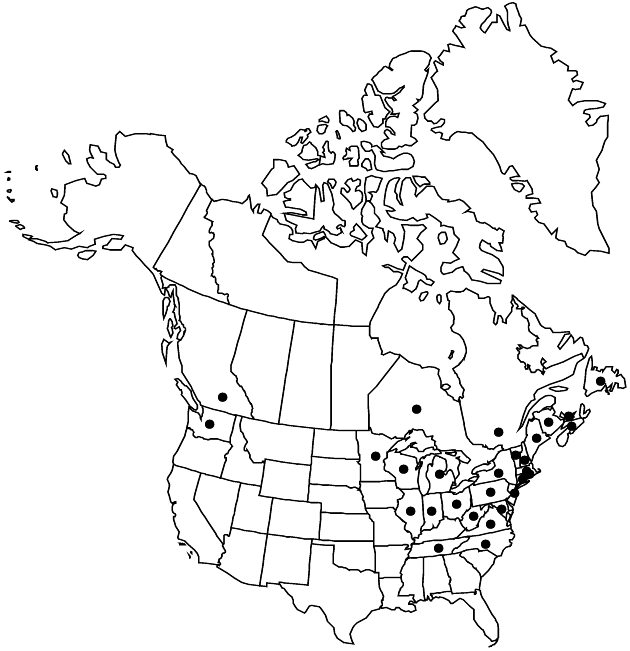Tussilago farfara
Sp. Pl. 2: 865. 1753.
Common names: Coltsfoot
IntroducedIllustrated
Treatment appears in FNA Volume 20. Treatment on page 635.
Basal leaves: blades palmately 5–12-lobed or angled, mostly 5–20+ × 5–20+ cm, margins irregularly denticulate. Cauline leaves mostly 5–25 mm. Calyculi: bractlets 5–15 mm. Phyllaries mostly 7–15 mm. Ray corollas: laminae (2–) 4–10 mm. Disc corollas 10–12 mm. Cypselae 3–4 mm; pappi 8–12 mm, ± surpassing involucres. 2n = 60.
Phenology: Flowering spring–summer.
Habitat: Disturbed sites, sandy or rocky soils, calcareous sites
Elevation: 0–800 m
Distribution
Loading map...

Introduced; Saint-Pierre and Miquelon, B.C., N.B., Nfld. and Labr. (Nfld.), N.S., Ont., P.E.I., Que., Conn., Ill., Ind., Maine, Md., Mass., Mich., Minn., N.H., N.J., N.Y., N.C., Ohio, Pa., R.I., Tenn., Vt., Va., Wash., W.Va., Wis., Eurasia
Discussion
Flowering heads of Tussilago farfara close at night (laminae of ray corollas arch and roll inward). The species is becoming an invasive weed in some areas.
Selected References
None.
Lower Taxa
None.
... more about "Tussilago farfara"
gray-tomentose +
introrse +
connate +
papillate +
deltate;lanceolate or penicillate +
scarious +
hispidulous +
papillate +
continuous +
decurrent +
nerved +
angled;5-12-lobed +
winged;nerved;ribbed +
1;15 +
stigmatic +
white +
persistent +
60;100 +
absent +
Coltsfoot +
not 2-lipped +
monomorphic +
5 - -10-ribbed +
glabrous +
3mm;4mm +
staminate +
staminate +
straight +
distinct +
proximal +
1;5 +
bisexual +
dispersed +
singly +
indeterminate +
Present +
true +
surrounding +
cylindric;subturbinate +
alternate +
erect +
denticulate +
scarious +
2-carpellate +
inferior +
attached +
anatropous +
fragile +
falling +
tough +
thick +
absent +
connate +
persistent +
distinct +
herbaceous +
falling +
erect +
subequal +
equal +
Sp. Pl. +
1753 +
pistillate +
absent +
fertile +
epaleate +
foveolate +
convex +
fibrous +
exalbuminous +
modifed +
alternate +
erect +
2-branched +
glabrous +
papillate +
not divided +
Tussilago farfara +
Tussilago +
species +
campanulate +
longer +
perennial +
